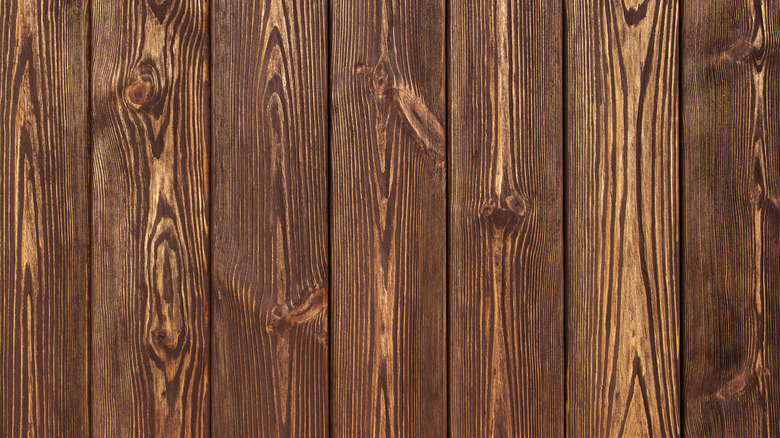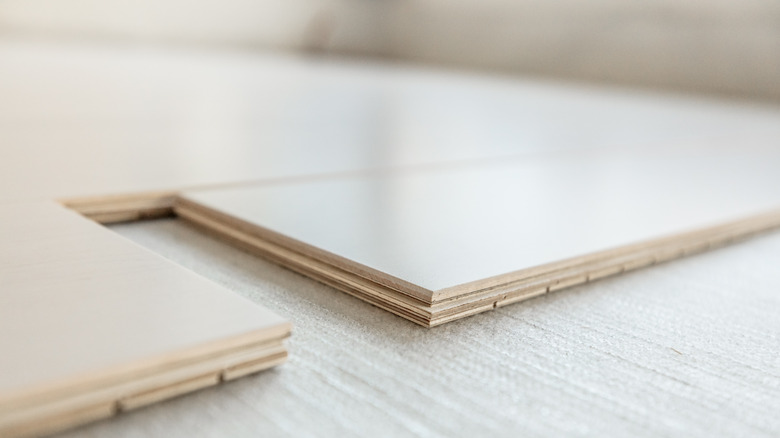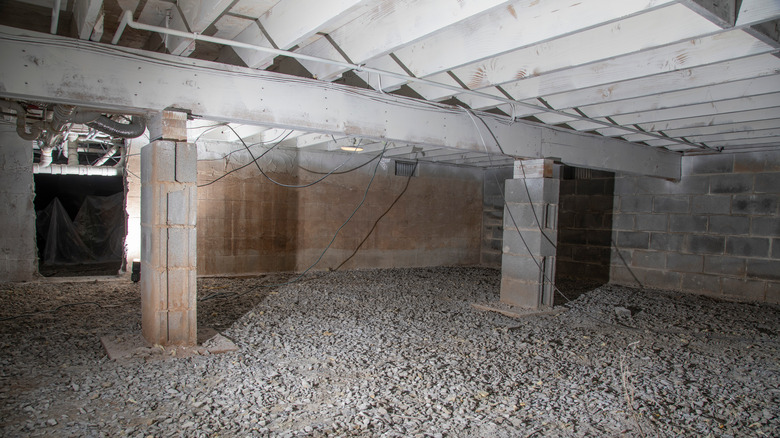The Fastest Fix For Squeaky Hardwood Floors
A squeaky hardwood floor is a major hassle for homeowners looking to create the perfect interior atmosphere. This Old House notes that squeaking is a common occurrence in homes that have settled and where the floorboards have had time to dry out and shrink. The boards then contain a bit of play in them, and as you walk across the floor this translates into movement and a rubbing against the subfloor or nails that creates this unpleasant sound. That squeaking can come from gaps that form within the flooring, either between hardwood boards themselves, or between the hardwood flooring and the subfloor beneath. Either way, there are a few simple fixes.
The first step to fixing a squeak is to identify the space that's causing it. Since movement is the issue, finding it requires you to walk around the room looking, listening, and feeling for changes. District Floor Depot notes that you are likely to see movement if the problem lies within the boards themselves, but not if the issue exists below in the subfloor. Likewise, a large affected area signals a subfloor fix rather than a single board issue.
Stabilize with shims
If you can access the space beneath your floors (from the basement or the space created by a pier and beam foundation), then stabilizing the area might be your best bet. The simplest solution for this problem is the use of a shim (or multiple shims) to alleviate the gaps that have formed in the space between individual boards or the boards and the subfloor beneath (via District Floor Depot). Searching for the gap will require the help of a friend or work partner. Simply have them walk around on the floor while you identify any movement from below. Once you've found the area (or areas), tapping on the floor to identify the exact problem spot will give you the information you need for making the necessary repair.
From there, all you need to do is wedge a small shim into each space that exhibits a gap. It's not advised to force a shim into place or hammer the stabilization tool into place. Slowly guide the piece into position to avoid creating a new air pocket that will eventually need to be fixed as well.
Finishing touches to eliminate the sound
After installing shims along the area that's creating a squeak, you'll want to secure the addition in place and shore up the area for a long lasting fix. Popular Mechanics notes that carpenter's glue or a fast-setting construction adhesive can give you the gripping power required to run the length of a beam or as a means of fastening your shims in place. Gluing the shims into their positions will ensure that this fix won't come loose over time, forcing you to address the same problem again and again.
From the Forest reports that you can also add additional beams to the space in order to shore up a warped joist. In fact, this is a great option for any type of squeaking if you have the time and budget to do it. Creating a more secure joist can build in additional support for the subfloor and hardwood surface above so that future problems are less likely to arise.
Lastly, if the subfloor itself is loose, screwing from the bottom will secure it to the hardwood planks and shore up large scale issues with movement and the resulting squeaks that are produced.


